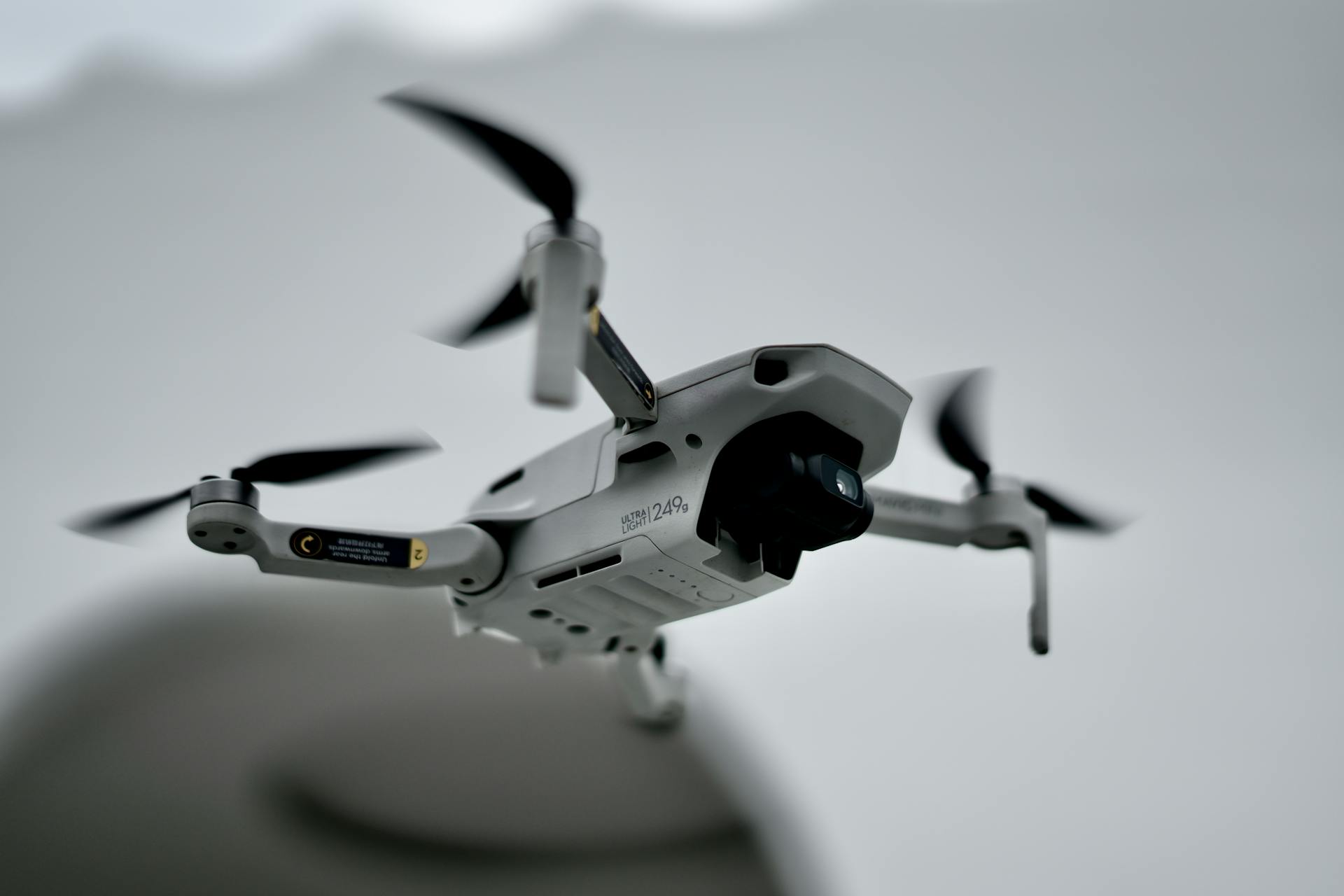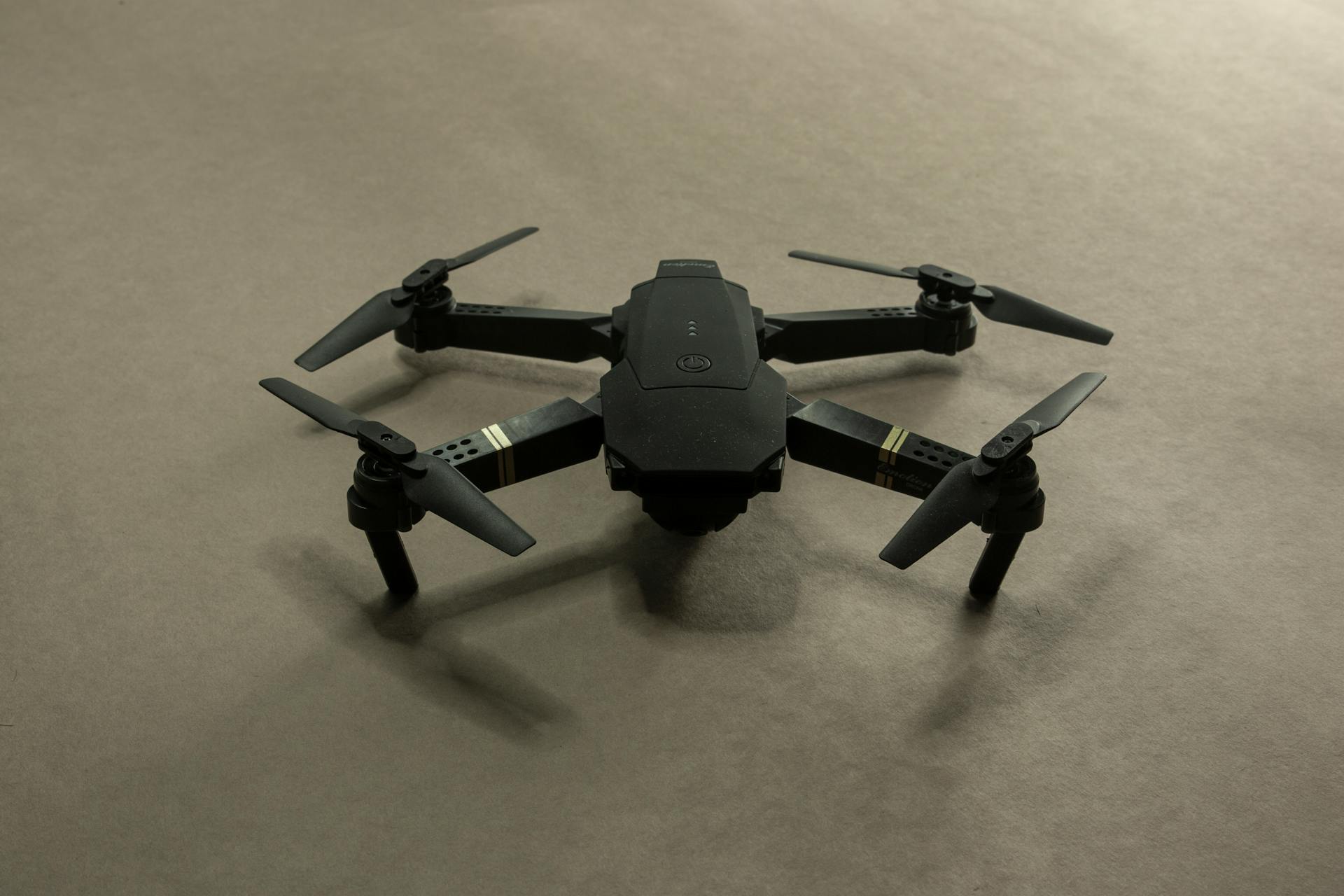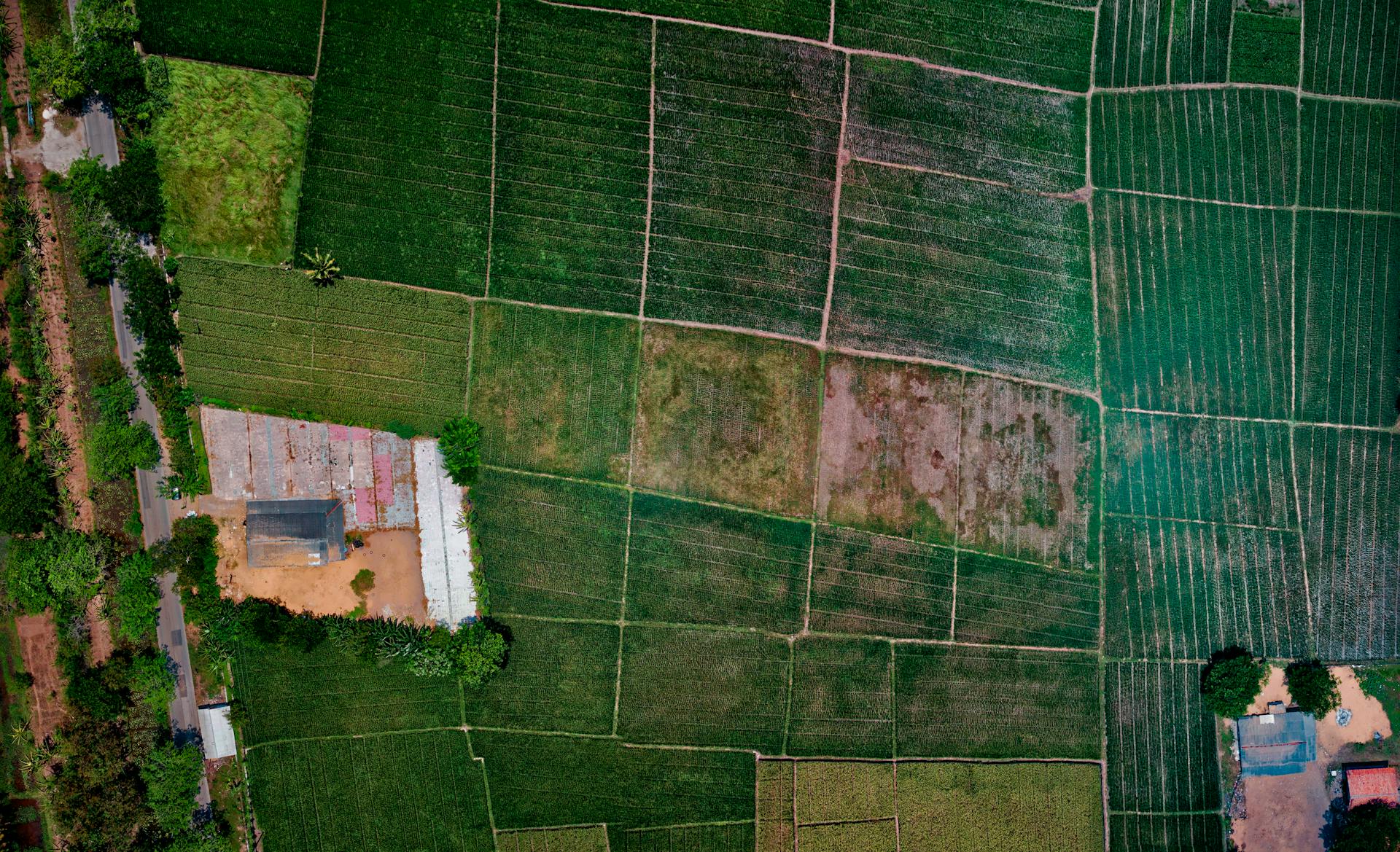
Drone remote ID is a critical aspect of safe and compliant flight. The Federal Aviation Administration (FAA) requires that all drones weighing over 0.55 pounds be equipped with a remote ID system.
This technology allows drone operators to broadcast their drone's location and identification information to nearby air traffic controllers. The FAA has set a deadline for compliance, which is rapidly approaching.
In the United States, the FAA's remote ID rule requires drones to broadcast their unique identifier, location, and altitude every second. This information is then received by nearby air traffic controllers, who can use it to track and monitor drone activity.
The benefits of remote ID are numerous, including improved safety and reduced risk of collisions.
Consider reading: Faa Drone Remote Id Module
Regulations and Requirements
The regulations and requirements for drone remote ID are in place to ensure public safety and accountability.
Drone pilots must register their drones with remote ID, and recreational flyers will need to add each Standard Remote ID drone and/or the Remote ID broadcast module to their inventory.
The remote ID standards will apply to drone users that require registration, except for users that operate a drone that weighs 0.55 pounds or less (less than 250 grams) and for recreation purposes only.
To comply with the remote ID requirement, a person may operate a standard remote identification unmanned aircraft only if the person operating the standard remote identification unmanned aircraft ensures that all of the following conditions are met:
- The standard remote identification unmanned aircraft must broadcast the message elements of § 89.305 from takeoff to shutdown.
- The person manipulating the flight controls of the unmanned aircraft system must land the unmanned aircraft as soon as practicable if the standard remote identification unmanned aircraft is no longer broadcasting the message elements of § 89.305.
A standard remote identification unmanned aircraft must be capable of broadcasting the following remote identification message elements:
Requirements for Standard Unmanned Aircraft
To operate a standard remote identification unmanned aircraft, you'll need to ensure it meets certain requirements. The aircraft must broadcast the message elements of § 89.305 from takeoff to shutdown.
The remote identification equipment must be functional and comply with the requirements of this part. This means it must not be disabled, and its functionality must be continuously monitored from takeoff to shutdown.
The unmanned aircraft must be designed and produced in a way that reduces the ability of a person to tamper with the remote identification functionality. This is to prevent unauthorized modifications or interference with the remote identification system.
The remote identification equipment must incorporate error correction in the broadcast of the message elements. This ensures the accuracy of the information being broadcast.
The unmanned aircraft must be capable of broadcasting the message elements using a non-proprietary broadcast specification and using radio frequency spectrum compatible with personal wireless devices. This means the aircraft must not interfere with other systems or equipment installed on it, and other systems must not interfere with the remote identification equipment.
To meet the minimum performance requirements, the unmanned aircraft must meet the following specifications:
The unmanned aircraft must also display a label indicating that it meets the requirements of this part. This label must be in English, legible, prominent, and permanently affixed to the unmanned aircraft.
FAA-Recognized Area Establishment Requests
To establish an FAA-recognized identification area, you'll need to submit an application in a form and manner acceptable to the Administrator.
The request must contain specific information, including the name of the eligible person, the name of the individual making the request, and the name and contact information of the primary point of contact for communications with the FAA.
You'll also need to provide the physical address and location of the proposed FAA-recognized identification area, as well as any existing letter of agreement regarding the flying site.
The Administrator will assess your application and may require additional information or documentation to supplement it. They'll consider factors such as existing flight or airspace restrictions, safety and security concerns, and the need for an FAA-recognized identification area in the proposed location.
On a similar theme: Dji - Mini 2 Se Drone with Remote Control
FAA-Recognized Areas
To establish an FAA-recognized identification area, an eligible person must submit an application in a form and manner acceptable to the Administrator.
An application must contain a range of information, including the name of the eligible person, the name and contact information of the primary point of contact, and the physical address of the proposed FAA-recognized identification area.
The proposed area must be located in a form and manner prescribed by the Administrator, and if applicable, a copy of any existing letter of agreement regarding the flying site must be included.
The Administrator will assess applications and may require additional information or documentation as needed to supplement an application.
The Administrator will approve or deny an application, taking into consideration factors such as the existence of any FAA-established flight or airspace restrictions that overlap with the proposed area, the safety and security of persons or property on the ground, and the need for an FAA-recognized identification area in the proposed location.
Frequently Asked Questions
Can you fly a drone without Remote ID?
No, you cannot fly a drone without Remote ID in the U.S. unless it weighs less than 0.55 pounds.
Do drones under 250 grams need Remote ID?
No, drones under 250 grams are exempt from Remote ID requirements for recreational use. However, they still need to meet other FAA regulations
Can the FAA track your drone?
The FAA can track your drone if it has a remote ID module, which broadcasts its location and other information. However, older drones without remote ID may still be trackable with additional hardware.
Featured Images: pexels.com


